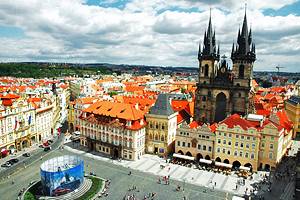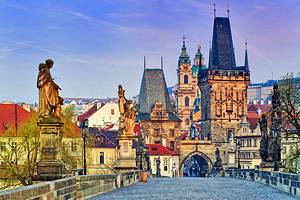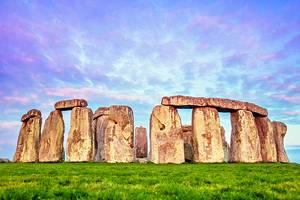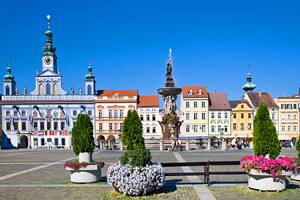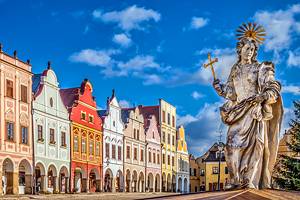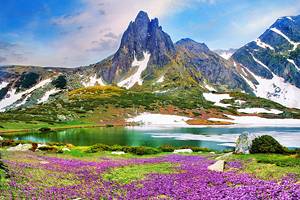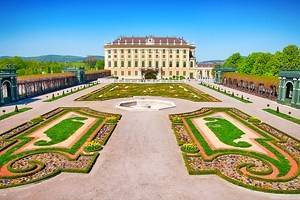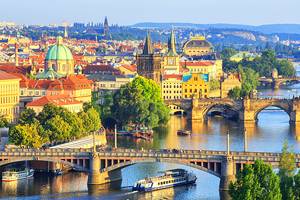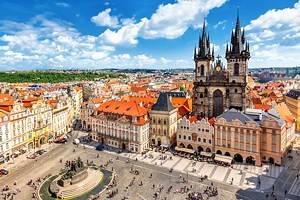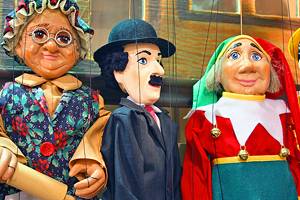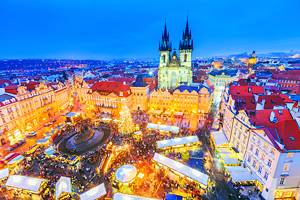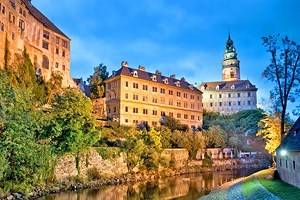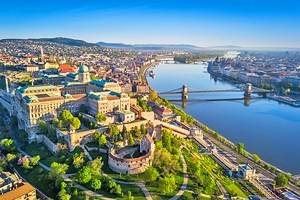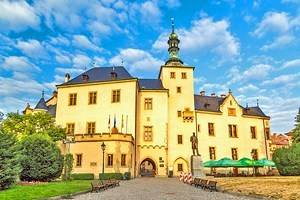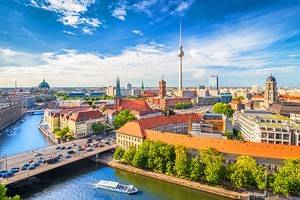Cities in Eastern Europe
Enigmatic Eastern Europe is home to some of the most fascinating and downright beautiful cities on the continent. Perfect for the intrepid traveler looking to escape the crowds overtaking Western European city counterparts like London, Paris, and Rome, a visit to Eastern Europe's best cities usually means fewer tourists and better value for money.
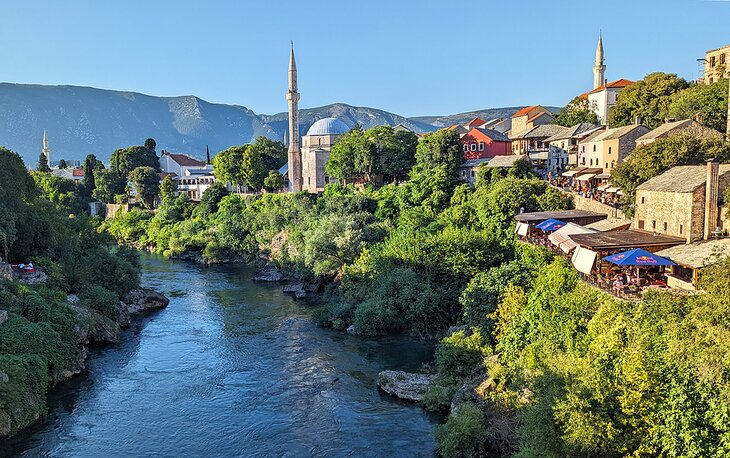
A trip across Eastern Europe can take you on an adventure that introduces you to ancient and contemporary history, culture, beauty, and a little roughness around some edges. There are medieval walled cities like Dubrovnik on Croatia's Dalmatian Coast, which is also home to beaches and warm turquoise water rivaling what you'd find on Italy's Amalfi Coast or in Greece.
Cobblestoned streets, castles, and enchanting bridges await in Prague, one of the region's most popular and oldest cities. Up-and-coming destinations like Mostar, Bosnia with its picture-perfect old town, and Skopje, North Macedonia with its larger-than-life sculptures and polished streets are places to consider adding to your next itinerary.
What constitutes Eastern Europe is relatively vague, but for this list, we've included countries the United Nations classifies as Eastern Europe.
Plan your travels with our list of the best Eastern European cities.
- Dubrovnik, Croatia
- Prague, Czech Republic
- Krakow, Poland
- Budapest, Hungary
- Bucharest, Romania
- Tallinn, Estonia
- Mostar, Bosnia
- Kotor, Montenegro
- Belgrade, Serbia
- Riga, Latvia
- Skopje, North Macedonia
- Bratislava, Slovakia
- Sofia, Bulgaria
- Český Krumlov, Czech Republic
- Vilnius, Lithuania
- Warsaw, Poland
- Map of Cities in Eastern Europe
Dubrovnik, Croatia
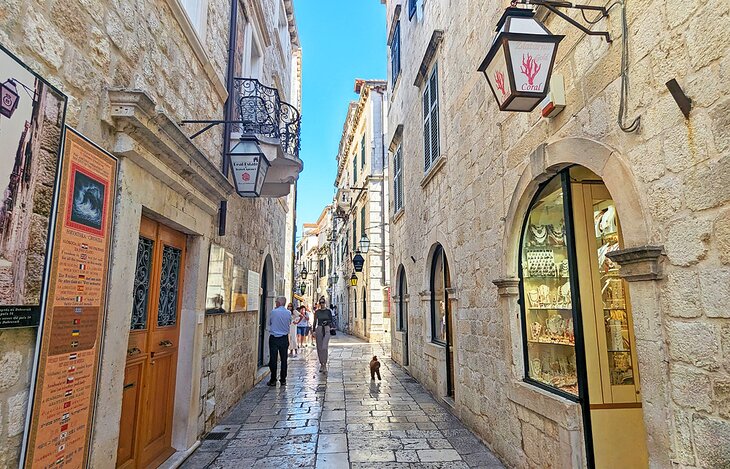
The minute you set foot in Dubrovnik you'll fall in love. It is that surreal and stunning. A fortified walled city with a fairytale-like Old Town on Croatia's Dalmatian coast, Dubrovnik has become massively popular in the last decade, and at times can be uncomfortably crowded (especially on days that cruise ships dock). Regardless, even with the crowds, this isn't an Eastern European city you want to skip, you'll want to see it at least once.
And while Old Town is certainly spectacular, there is more to Dubrovnik outside the walls. On the Adriatic, you'll find a mix of sand and pebble beaches backed by crystal-clear aquamarine waters that are warm enough to swim in. Head to Banje Beach, just steps away from Old Town to start.
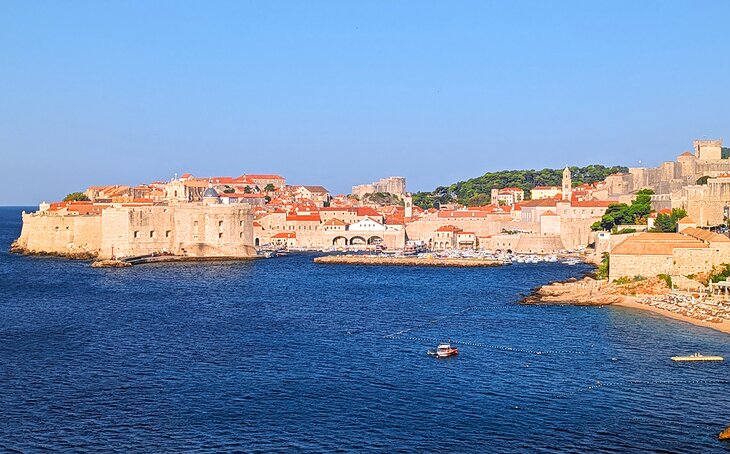
Its seaside location also makes it the perfect starting point for day trips and island-hopping, with a number of ferries making their way to the Elafiti Islands, filled with cafés, restaurants offering al-fresco dining, and sea caves waiting to be explored.
With a history that dates back to the 7th century, it's no surprise that many of Dubrovnik's main attractions are historical structures, including the city gates, the Stradium pedestrian street, and the Rector's Palace and Cultural Historical Museum.
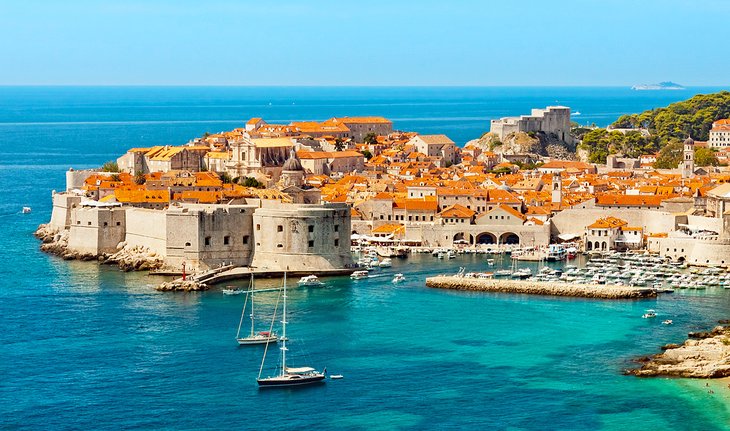
If you are a fan of Game of Thrones, Dubrovnik will look familiar as many of its best-known spots, including the old city walls, Fort Lovrijenac, and the Spanish Steps, stood in for Kings Landing on the hit show. Today you can take set-jetting tours to top filming locations.
Prague, Czech Republic
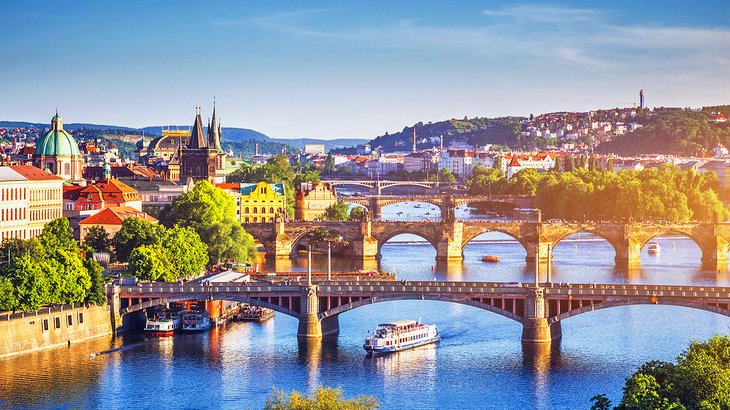
Dating back to AD 870, Prague is not only one of the most visited cities in Eastern Europe, but also one of the oldest.
Prague is the ideal destination for bargain hunters, with regular flight and train connections from most major cities in Europe, and affordable accommodations. Many of the city's major attractions are also free - you can stroll across Charles Bridge, walk the grounds of the Prague Castle, or see the amazing views over Prague from Petrin Hill without spending a penny.
The city can get very crowded in summer, but this is also a great time to enjoy the outdoor cafés, have a picnic with a view on Kampa Park (home to some very famous and quirky art installations), or catch live music and events on the Naplavka riverbank.
On rainy days, the city's many museums and galleries are a must-see (don't miss the museum dedicated to Prague-native Franz Kafka), and there are also Cold War bunkers, plenty of theaters and concert halls, and the stunning Strahov Library (considered one of the most beautiful in the world) to explore.
Krakow, Poland
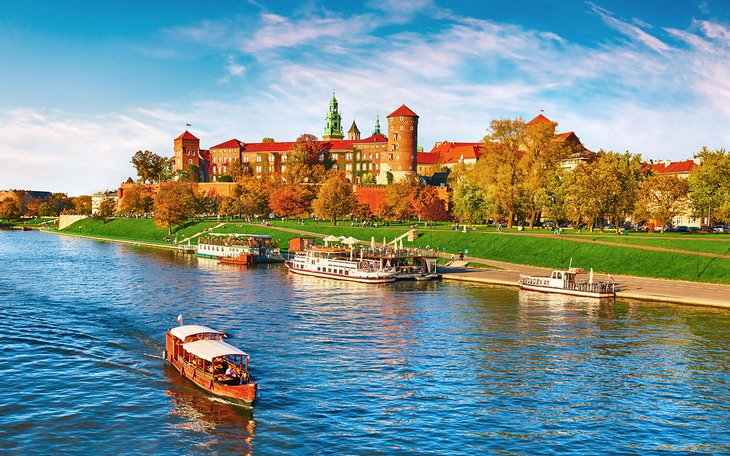
The official capital of Poland during the Middle Ages, Krakow still retains its impressive royal look. Krakow was also one of the few Polish cities to make it unscathed through WWII and as a result, its architecture - a fairy-tale mix of Romanesque, Gothic, and Art Nouveau, among others - remains intact.
This includes the beautiful historical city walls, St. Florian's Gate, St. Mary's Basilica and the world's largest Gothic altarpiece, and the towering Wawel Castle.
For both historians and movie buffs alike, much of the Oscar-winner movie Schindler's List was filmed here. Oskar Schindler's original enamel factory has been converted into two museums and now holds items from the movie set, including Schindler's desk. Visitors can also tour the former Jewish district of Krakow, the remnants of the Ghetto Wall, and many filming locations.
You can also visit the Wieliczka Salt Mines from Krakow. This former 13th-century working mine is located just outside of town and is considered one of the main tourist attractions in Poland. Krakow is also the starting point for trips out to the Auschwitz-Birkenau Memorial camps.
Budapest, Hungary
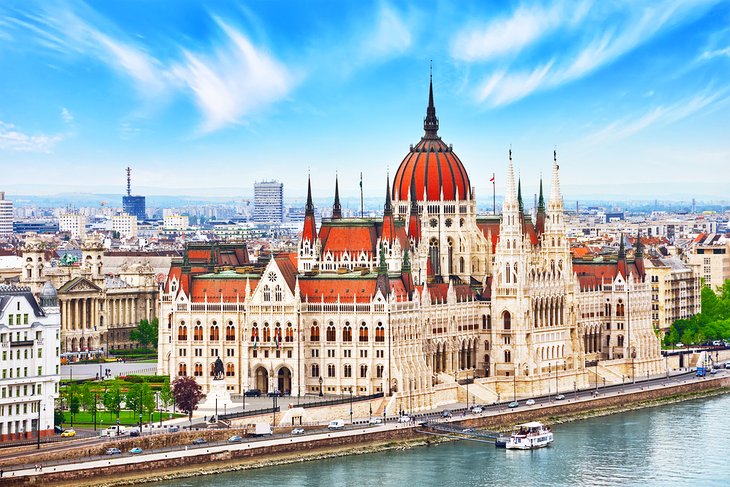
With a dramatic skyline and plenty of historic and cultural sights, the capital's charms are undeniable. Also known as the "Pearl of the Danube," Budapest offers great food and a rich history that includes Roman and Turkish influences. You can see that in the thermal baths (especially the very popular Rudas or Szechenyi baths) that are considered a staple of Hungary's culture.
Budapest's most stunning area is Castle Hill, a limestone plateau that overlooks the Danube and is home to the most famous attractions in the city. These include the 13th-century Buda Castle and its underground labyrinth (part of the area's underground cave system), Trinity Square, a subterranean museum holding a WWII hospital and a nuclear bunker, and the Széchenyi National Library.
There are plenty of unique day trips you can take from Budapest, including the town of Eger, famous for its thermal baths and Baroque churches; the large Baroque Royal Palace of Gödöllo; and the Aggtelek National Park and the Baradla Cave, which extend into Slovakia.
Bucharest, Romania
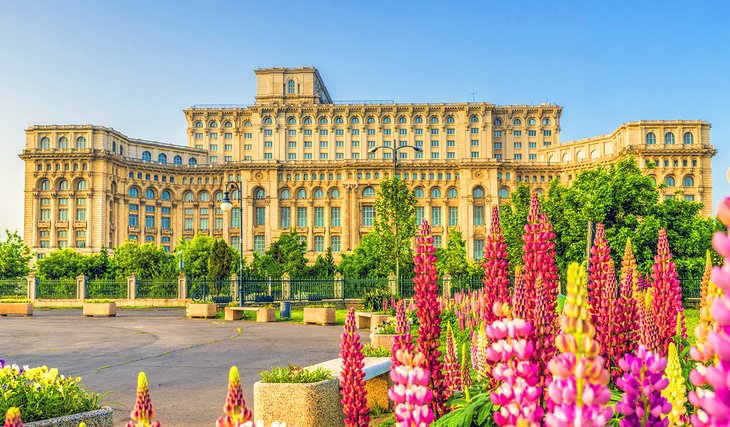
Romania is one of the cheapest European countries to visit, and the savings stretch to the capital as well. Public transportation is affordable, budget accommodation is plentiful, and many of the main activities in the city - including strolling along Calea Victoriei avenue and relaxing at Cişmigiu, the oldest public gardens in Bucharest - are free of charge or cost very little.
One of Bucharest's main attractions is its 15th-century Old Town, which features many historical buildings but also cobblestone streets lined with cafés; restaurants; and shops selling traditional jewelry, art, and food.
The city architecture is also worth mentioning - it's famous for its impressive, ornate, and sometimes larger-than-life buildings. This includes the Palace of the Parliament; the Byzantine-inspired Stavropoleos Church; and the Romanian Athenaeum, home to the George Enescu Philharmonic Orchestra.
Other things to do in Bucharest include stopping by Bucharest's own Arch of Triumph and visiting the Dimitrie Gusti National Village Museum, an open-air museum that chronicles Romania's traditional way of life.
Tallinn, Estonia
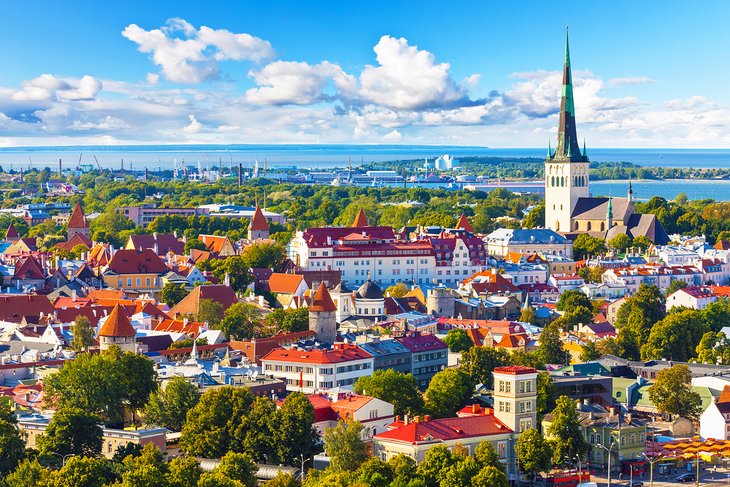
Located right on the coast, with open views over the blue water of the Gulf of Finland, Tallinn is a city that knows how to mix the old and the new very well. Over the past decade, Estonia has become a haven for entrepreneurs, and the growing business center of the city - with its many trendy shopping centers and restaurants - is proof of it.
Tallinn also happens to be one of the most compact capital cities in Eastern Europe, which means you are never more than 15 minutes away from the stunning Old Town. A UNESCO World Heritage Site, Tallinn's walled Old Town is filled with medieval churches, a Gothic Town Hall, impressive towers, and plenty of charming cafés for a quick stop when your feet are starting to complain.
There's still plenty to see and explore outside the center, including the Lennusadam Seaplane Harbour Museum, the pink Toompea Castle, the Russian-inspired Aleksander Nevski Cathedral, and a number of art galleries and small museums.
Although disputed, Estonians claim to be the inventors of marzipan, and the Kalev Chocolate Shop and Workshop is the place to stock up.
Read More: Attractions & Things to Do in Tallinn
Mostar, Bosnia
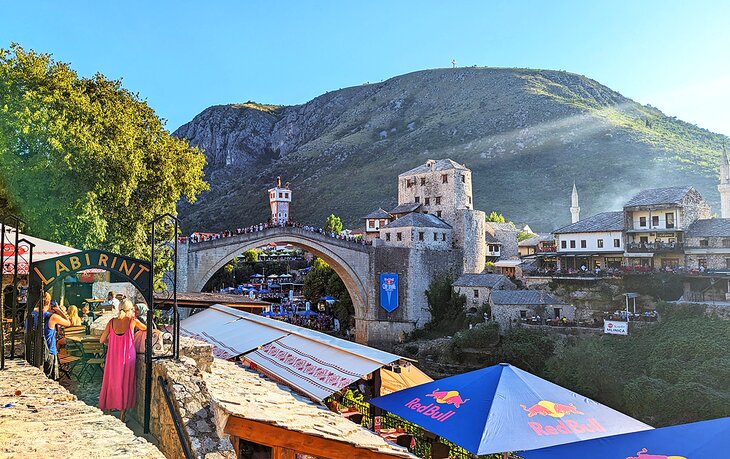
With its famed Ottoman-era bridge, blue-green river, cobblestoned streets, and Islamic architecture, Mostar is a hidden gem of Eastern Europe. The city is just a 2.5-hour drive from Dubrovnik, Croatia, and easy to reach by road, although you won't find rail or air access here.
Many still only associate the city with a war zone from the Bosnian Wars of the mid-1990s, but there has been no fighting here for more than 25 years now. Today, Mostar is a safe and charming destination where the people are kind, and the food and lodging are much cheaper than in Croatia.
Mostar is a very compact city that you can easily explore on foot in a single day. Its most famous site is Stari Most (the old bridge). If you are in for a bit of adventure, you can sign up for the Mostar Bridge Jump through the dive school, located on the right side of the bridge.
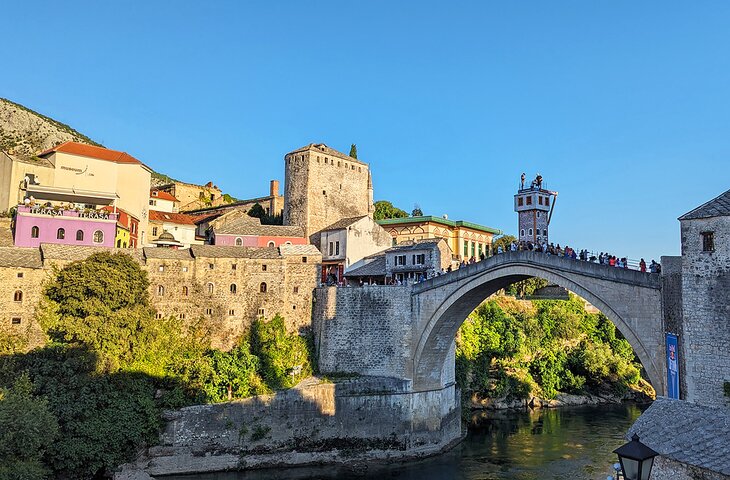
The jump is 23 meters, so it isn't for the faint of heart – it's so adrenaline-fueled in fact, that Red Bull held their international cliff diving championships here in September 2023. But the dive school instructors will give you instructions and a wet suit and have you take a practice jump off a 10-meter board downriver before you attempt the actual thing.
If bridge jumping isn't for you, you can watch the action from one of the many cafés lining the side of the river. Other Mostar attractions include shopping in the old bazaar, seeing the Koski Mehmed Pasha Mosque, or taking a day trip to the nearby Kravica Waterfall, which is stunning.
Kotor, Montenegro
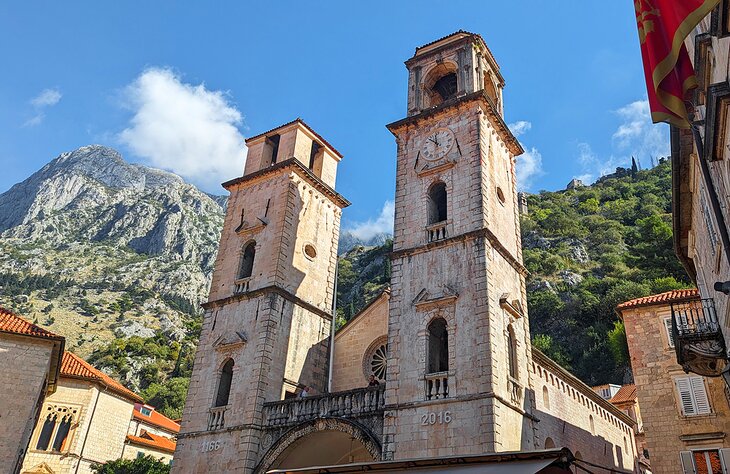
Set on the edge of a submerged river canyon in the Adriatic that is oft referred to as Europe's southernmost fjord, Kotor is one of Eastern Europe's most beautiful capital cities. It has a Dubrovnik-like vibe to its ancient medieval Old Town surrounded by towering Venetian walls, but crowds are fewer (unless cruise ships are in port), prices lower, and the mountains and bay surrounding it more dramatic.
Take a stroll through the Old Town, which is a UNESCO World Heritage Site, with remnants, including its walls, dating back to 1420. The Old Town is quite compact with just one main square that can be explored in a few hours. It has cobblestone streets, a myriad of shops, cafes and restaurants, and a 12-century Romanesque Cathedral of St. Tryphon. Step inside to see its 14th-century frescos.
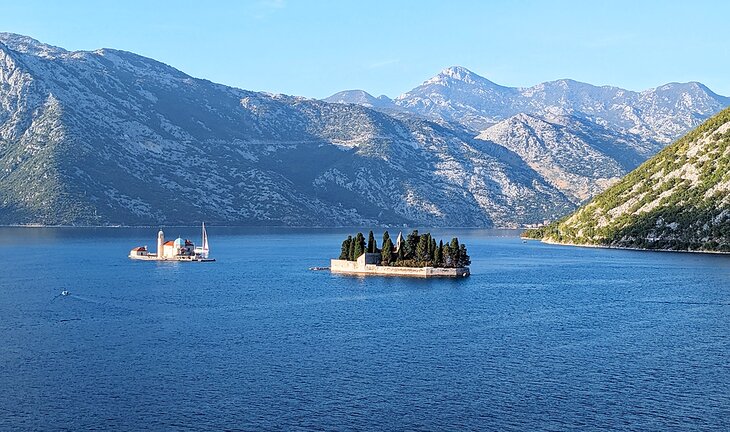
You can also walk Kotor's walls, some of which date back to the 9th century for free. If you've just come from Dubrovnik, you'll find these walls are much steeper and higher taking you up 1,350 steps in a 4,000-foot ascent. But the views from St John's Fortress at the top are worth the climb.
Read More: Things to Do in Kotor
Belgrade, Serbia

Belgrade is not the most beautiful city in Eastern Europe, it has a distinct grittiness to it that cannot be overlooked. But Serbia's historic capital also has a distinct charm about it; and feels like the kind of city you want to scrape beneath the surface and get to know. It's also an easy entry point for exploring other parts of Serbia and other Balkans countries.
Belgrade's architecture has plenty of Art Deco, Baroque, Art Nouveau, and even modernist examples to offer. The Presidential Palace and the Town Hall are good places to start, but a stroll down the Kneza Mihaila pedestrian street is an even better way to appreciate historical buildings that have been converted into artsy galleries, boutique shops, and cozy cafés.
The Belgrade Fortress is the most visited attraction in Belgrade. Not only is the building itself and the museum inside stunning, but the fortress is also surrounded by the massive Kalemegdan Park and set on a ridge that overlooks the point where the Save and the Danube rivers meet.
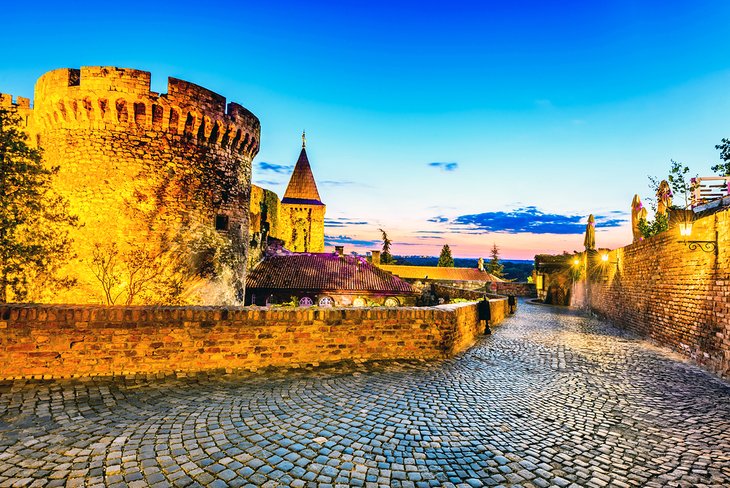
The views are even more magnificent at night, when you can catch the reflection of the city lights over the water.
Other places worth visiting include the Nikola Tesla Museum and the uninhabited Great War Island, offering a swimming beach, opportunities for kayaking, and plenty of wild birds.
Riga, Latvia
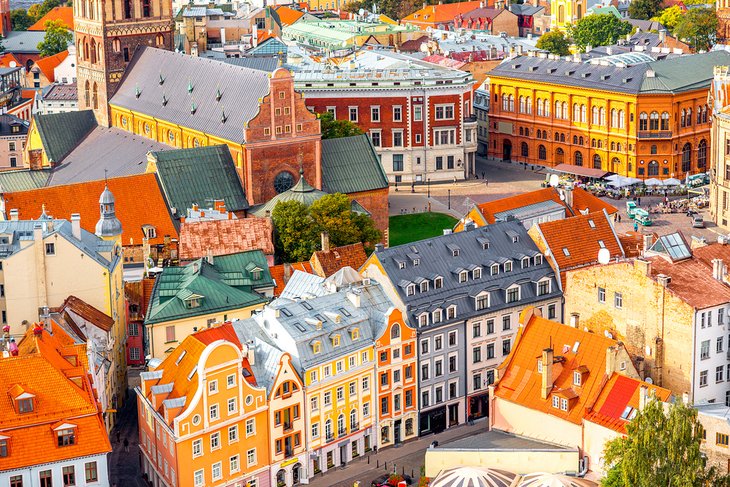
Riga is a small city, perfect to be explored over a quick weekend trip. Most budget airlines stop in Riga, offering plenty of connections for you to discover the cultural capital of the Baltics before you move on to other destinations in Latvia to enjoy the Baltic Sea's gorgeous coastline.
You don't have to go far to enjoy the sand either - Jurmala beach resort is just 20 minutes away by train from central Riga.
Latvia's capital is a melting pot of various nations and cultures, something you can clearly see on the many different architectural styles lining the cobblestone streets of Old Town.
Riga's Central Market, the largest indoor market in Europe, with over 3,000 stalls, is another great way to explore the diversity of the city - you can pick souvenirs here, experience some authentic street food, or try fresh products from local Latvian farms.
Skopje, North Macedonia
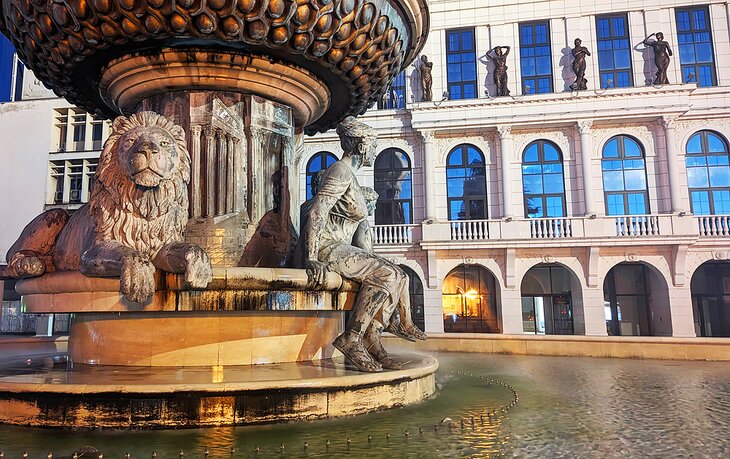
Skopje doesn't look like any other city in Eastern Europe. The North Macedonian capital is a quirky spectacle that truly has you wondering if you've walked into a parallel universe. The monuments to historic figures here are not just larger than life, they are truly gigantic, and often lit in a variety of pink and purple hues. The Alexander the Great statue in Macedonia Square stands a towering 22 meters high, for instance.
A relatively compact city, you can walk most of Skopje's attractions in a few hours. Whatever you do, don't miss wandering this city after dark, when the light displays on the monuments, fountains, and buildings add an extra photogenic allure (you'll also want to see it in the daytime).
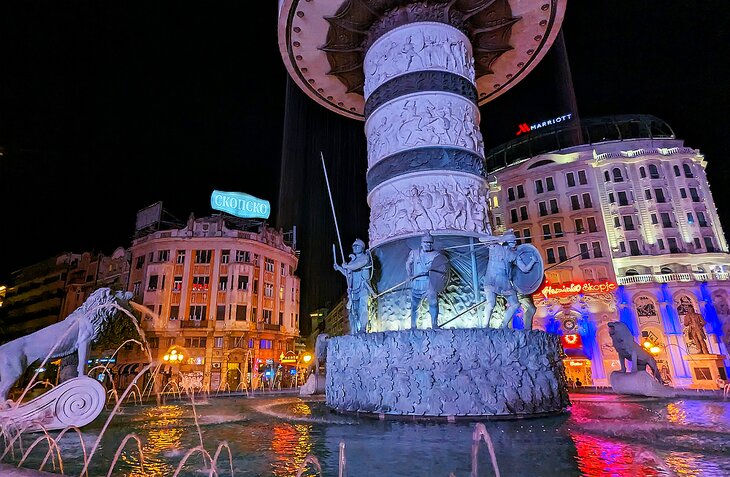
Besides the 284 statues scattered across this city, there are gaudy neo-classical buildings, gleaming white and polished in contrast with other architectural styles in the city center. In fact, it appears Skopje is constantly reinventing itself and adding new monuments and renovating regularly – the city has spent more than 560 million Euros so far on its one-of-a-kind look.
There is also an old town across the bridge from Macedonia Square that is a complete contrast to the new part of Skopje. Home to most of the city's Muslim population, it has a large bazaar, cobblestoned streets, wooden buildings, and mosques. The Kale fortress that keeps watch over the city is also seen on the hill above it. The old town is a great place to grab a leisurely bite to eat.
Bratislava, Slovakia
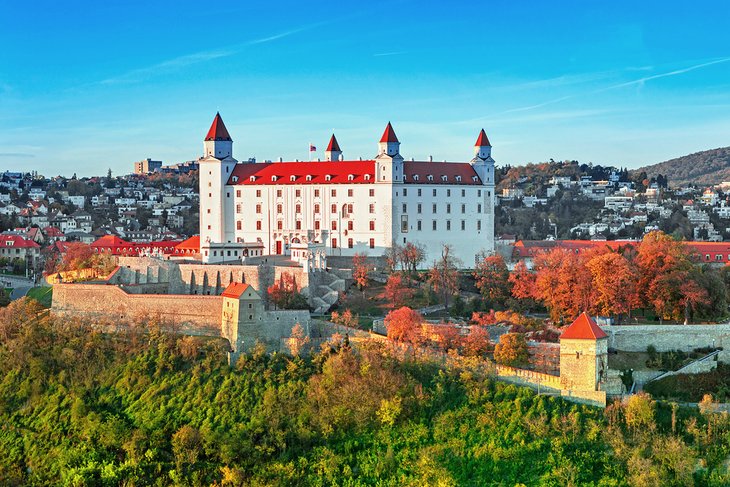
Bratislava is often a stop on the way to the many stunning national parks that dot the nation, but this small and sometimes unassuming city has plenty to offer in the way of history, culture, and food.
In fact, Bratislava is a great destination for a city break with a vibrant gourmet scene, a unique café culture, and plenty of sports and activities for all ages and tastes.
The city is especially bike-friendly, and visitors can easily rent one to explore the many themed bike circuits around town.
When it comes to architecture, it's hard to beat Bratislava Castle, which sits atop a hill and can be seen from almost anywhere in the city. If you make it to the castle itself, make sure you climb the almost 50-meter-tall castle tower for a sprawling view over Bratislava.
If you're into museums, the castle houses a branch of the Slovak National Museum, but there are plenty of other museums and galleries to discover around the city, as well as many quirky statues hidden in parks and city corners.
Other things to do in Bratislava include taking a river cruise to enjoy the Danube scenery; visiting one of the many urban parks; taking a stroll through the gardens of Grasalkovičov Palace; or visiting Hviezdoslav Square, home to the Slovak National Opera Theater and to a stunning Christmas market during the winter.
Sofia, Bulgaria
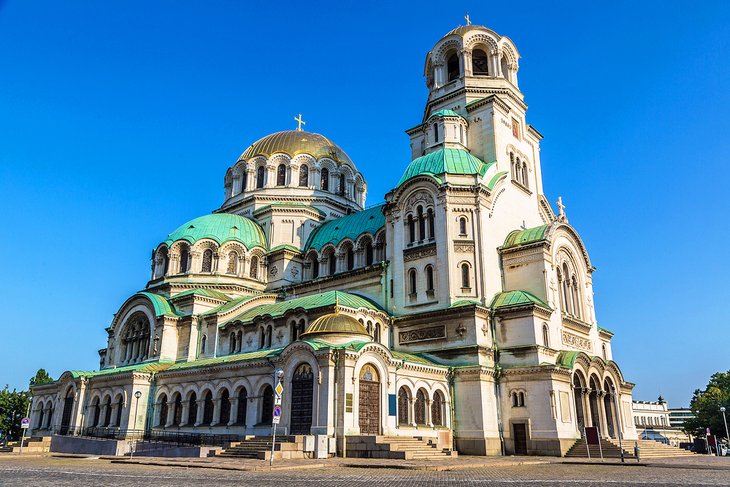
Sofia's history and architecture have been heavily influenced by some of the biggest civilizations in the world, including the Greeks, Romans, and Ottomans. A clear example of the eclectic architecture here is the Neo-Byzantine Saint Aleksandar Nevski Cathedral, Sofia's main tourist attraction and one of the largest Orthodox churches in Europe.
Other important historical monuments here include the 10th-century Boyana Church Museum and its many frescoes, the Sveti Georgi rotunda, and the former Turkish Mineral Baths, which now house the Sofia History Museum.
Hearty Balkan dishes are a must-try when in Sofia, and so is the local mineral spring water, which flows freely from drinking fountains around the city. For active visitors, Vitosha Mountain is just 30 minutes outside the city and offers both hiking and skiing, depending on when you're visiting.
Český Krumlov, Czech Republic
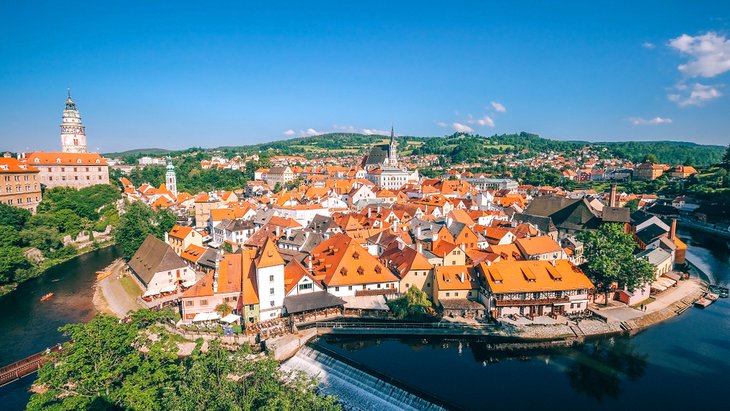
If you've already visited Prague and fallen in love with its red rooftops and cobblestone streets, medieval Český Krumlov is the perfect follow-up stop.
Much smaller and more intimate than Prague, Český Krumlov feels like you've taken a step back in time. The historical center, a UNESCO World Heritage site, surrounds the 13th-century castle, and you could get lost in the little alleyways and pretend you're in a fairy tale. Make sure you spend some time wandering around the medieval streets to discover hidden little boutique shops selling art and unique handmade souvenirs.
The castle itself sits right on the banks of the meandering Vltava river – a popular destination in itself for kayaking and rafting. Climb to the top of the castle tower for the best 360-degree views over the charming town, then join one of the guided tours if you want to see the inside of the castle, or visit one of the few surviving Baroque Castle Theaters in Europe.
Aside from the castle, the church of St. Vitus (the burial place of notable Bohemian families) and the Minorite Monastery, with its classical concerts, are other top attractions in Cesky Krumlov.
On a rainy day, visit the Museum Fotoatelier Seidel, dedicated to the lives of European photography pioneers Josef and Frantisek Seidels.
Read More: Day Trip to Cesky Krumlov from Prague - The Complete Guide
Vilnius, Lithuania
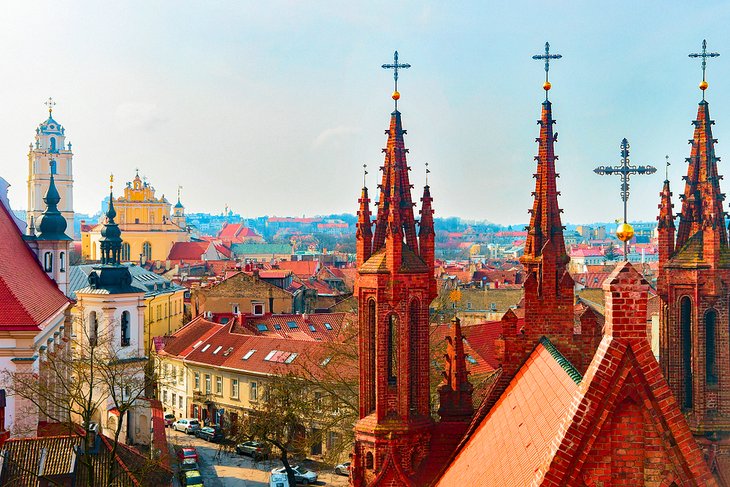
The capital of Lithuania is home to a UNESCO-listed Old Town, amazing cuisine, and trendy neighborhoods that make it a great destination for those looking for something off the beaten path. Vilnius is a compact city, and most of the main attractions are within walking distance of the town center, so if you only have a day or two to explore, you will still be able to see plenty of it.
The main attraction here is, without a doubt, the 14th-century Trakai Castle. Built in the middle of Lake Galve (one of the country's deepest lakes) and accessible via a pedestrian bridge, the castle offers tours and is home to a museum. Arrive in winter, and you'll find the lake has frozen over and you can skate on it for some stunning pictures.
Start your day with some pastries from the old Hales Market, stop by the historical Gate of Dawn, and make time to visit the Museum of Occupations and Freedom Fights to learn about the difficult history of occupation and resistance in Vilnius.
Just 10 minutes outside the city is the Verkiai Regional Park and its six emerald green lakes. Surrounded by wooded hills and with plenty of swimming spots, they make for a great (and very popular) summer destination.
Warsaw, Poland
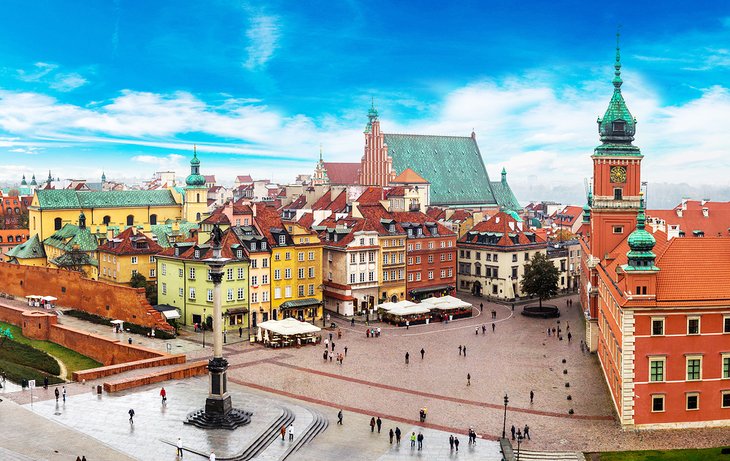
Most visitors arriving in Poland head to Krakow first, but the capital city Warsaw has much to offer as well. More spread out than smaller Krakow, Warsaw offers a great mix of old and new, with a beautiful Old Town but also a vibrant café culture, great restaurants, and cool museums that will keep you busy for days.
Warsaw was heavily damaged during WWII, so many of the buildings you see today were meticulously rebuilt after the war. That means even the Old Town is relatively new compared to other Old Towns in Europe. Don't let that discourage you, though. Its colorful tenement houses, inscription as a UNESCO World Heritage site, and direct access to the Royal Castle are all reasons enough to take a look.
Home to plenty of green spaces (the 37-acre Saxon Garden is particularly beautiful), the very famous Wedel Chocolate Factory, and museums dedicated to Frédéric Chopin and Marie Curie (both born here), Warsaw really has something for everybody. Spend time at the unique Neon Museum and grab some traditional zygmuntówka cake.


